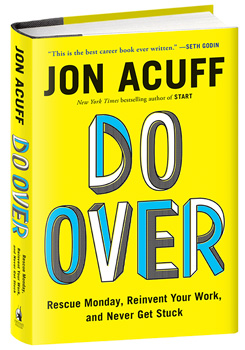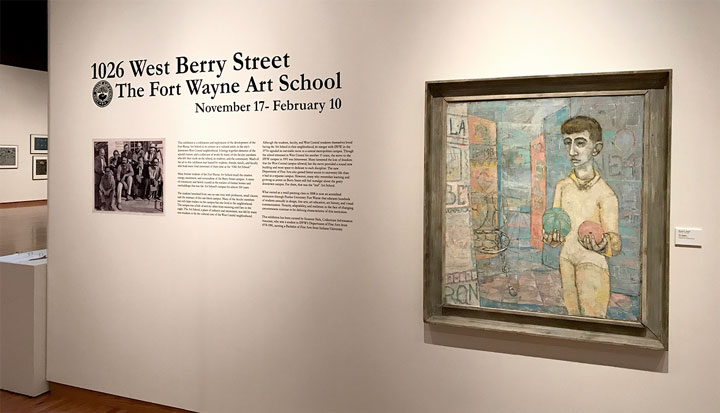
At the beginning of 2014, I found myself in what Jon Acuff calls a “career bump”, a negative involuntary career transition. The agency I had been on a full-time freelance retainer with for the previous two years lost their largest client and suddenly had a lot less work for me.
As it goes, this didn’t happen at the best time either. Stefanie and I had had moved to Brooklyn eight months earlier and were struggling financially with the cost of living adjustment we’d made moving back to the United States (to the most expensive city in the country, no less).
One of the beauties of freelancing is that employment isn’t a boolean, you’re less likely to go from 100% employment to 0. This gave me a longer runway as I was able to continue to work part-time for the agency as I sought new opportunities.
One of the main reasons we decided to move to Brooklyn instead of one of the other options Stefanie’s medical school presented was that if this exact scenario presented itself, it would be a lot easier for me to find work; and in the end, that did prove to be true, but I made things a lot harder for myself. I vowed never to put myself in that situation again.
The Career Savings Account
From the second I picked up Do Over, Acuff’s concept of a “career savings account” immediately made everything I’d experienced click and gave me a tangible framework for how I continue to work to make my next career transitions better ones.
In 2014, my career savings account was almost empty, the rest of this post is about how I translated Acuff’s advice into my own life.
Relationships
When I started looking for new work, it suddenly became very clear to me that my entire professional network was in southern California. Aside from some remote opportunities, this was less than helpful in New York. Every opportunity I replied to I had to do so completely cold, no one knew me from Adam.
The first step here was obvious, attend some meetups. Fortunately, there is nowhere quite like Manhattan for meetups. The sheer number of people who are below 59th Street at 5pm makes organizing something that 30 people will show up for on a weeknight less of an obstacle to overcome than it is elsewhere. As a result, there’s no lack of events to attend and introduce yourself to others in your industry.
After my employment situation was stabilized, I took the next step. I realized there were so many companies and organizations across the country doing great work who I followed online but I didn’t know anyone that actually worked there. I wanted to change that.
After some research, I landed on Circles Conference being the place I could go to meet as many of the aforementioned people in one place as possible. The experience was even better than I could have hoped for. I met more like minded people in my industry in two days than I had in the past several years combined.
I returned for Circles Conference the following year and will attend my 3rd Squares Conference (its sister conference) this month. Resisting the temptation to go to a new event each year and returning to invest more in the relationships I’d started (while still meeting some new people, of course) has been worthwhile.
When I left Brooklyn and moved to central Pennsylvania, I knew that I was going to have to be more intentional about all of this. There wasn’t going to be dozens of meetups every week on the path of my commute home. It took me several months, but I joined a local coworking jelly of other remote workers and made trips to Illinois, California, Ohio, and Ontario to meet in person with clients and other people in my professional network.
Skills & Hustle
These are separate sections in the book and you rely on them in different career transitions, but personally, my investment in both of these happens at the same time.
Every week I read about new techs from links posted on Twitter and I come up with ideas for side projects that utilize them.
In my day-to-day working, I often get stuck in execution mode, I rely on the the methods I know and only make progress on the most directly pressing work. During the periods I’m freelancing full-time, this comes with an extra sense of guilt, as I’m theoretically in complete control of my schedule.
I’ve developed a few strategies that help make sure I’m making progress on learning new skills and hustling on side projects.
For learning new skills, I’ve had a subscription to Code School ever since I moved to Pennsylvania. Their courses are broken into tiny subsections, making it easy to push myself to work for a few extra minutes at the end of the day to make some progress.
As for using what I’ve learned, I’ve found I have to follow the same strategy that I have with the courses.
I’m a proponent of the maker’s schedule, but the reality is I’m far less likely to get four or six uninterrupted hours to work on a side project like I do on my main paying client’s projects.
If I’m ever going to make any progress on a side project, I need to make a plan and divide it into as many small tasks as possible so I can do a little each day.
Character
This section ended up being a lot more convicting than I was expecting from a book of this genre. Acuff writes that character is what you must invest in order to make a successful career jump, a positive voluntary career transition.
A few pages were dedicated to the negative patterns we repeat as we move from job-to-job and how they are like weeds that prevent your character from growing.
The negative pattern I repeat is that I consistently don’t complete work when I communicate that I am going to complete it.
While I continue to struggle with this, I am making progress by identifying the two causes of it – poor estimation and lax scheduling.
The root of my poor estimation comes from not valuing what I do and what I contribute enough. I minimize all the time I spend finessing over small details. I ignore that I like to step away from something for a few days and come back and change it drastically for the better. I make estimates based on the path to the final product being a direct one, which isn’t how I work nor a representation of the value I am capable of contributing.
My lax scheduling is a pattern that I’ve been letting establish since college, but it’s gotten worse since we moved to Pennsylvania. Our time here started with a lot of disruptions to my working time and space – we had a puppy running around and work being done on the house we just bought – and I let being disrupted become the norm even after the puppy grew up and the house was mostly finished.
If I correctly estimate that something is going to take 32 hours and I want to complete it in eight business days, I need to work on it for 4 hours a day. It’s simple math.
If I don’t spend 4 hours on day 1, I need to actively adjust schedules and/or expectations instead of my patterned behavior of being lax and just assuming everything will just be fine. It might all be fine, but I will not finish when I said I would.
Being proactive here has been challenging, it does not come easily to me; but when I look back at how I operated a few years ago and compare it to now, I can see that I have made progress.
Today’s Career Transition
Today, I find myself in a weird mix of another negative involuntary career transition and a positive voluntary career transition. My largest client was acquired at the end of 2016 and they’ve phased me out as part of the acquisition. While that was all happening, I started a business with a colleague where we’ll be using the skills we put to use in our individual freelance practices to create a business with an entirely different revenue model (something I’ll post about separately).
While transitions are always uncomfortable and require a lot of faith, I feel much more prepared today than I did in 2014.
Whether you’re going through a career transition right now or expect to go through one some day (hint: that’s everyone), I highly recommend picking up a copy of Do Over. It’s now available on paperback.



